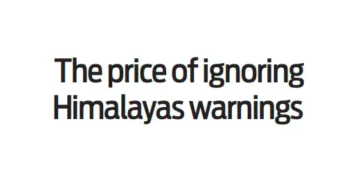Sindhu Jha
NEW DELHI: THE Himalayas are showing the price of ignoring science and warnings. The recent natural disasters like cloudbursts and flash floods in the country have indicated how altered rainfall, geology and rampant construction are turning landslides and floods into killers.
As per Government data in 2025, the Himalayas have been in crisis almost every single day. Between January and August, the 13 Himalayan states and Union Territories recorded at least one disaster daily, killing many people.
The pattern is only getting worse. In 2022, disasters struck on 63 per cent of the days in the entire year, with 1,058 deaths. In 2023, the numbers rose to 68 per cent with 837 deaths. In 2024, they climbed to 70 per cent, killing 870 people.
According to India Meteorological Department (IMD) data, not only did the Southwest Monsoon arrive a week early this year, it was punctuated by an unusually high number of western disturbances, extra-tropical storms that normally affect India in winter and spring. Between June 1 and August 20, India recorded 14 western disturbances.
Five occurred in June, five in July and five in August. At least four were strong and persistent, lasting five to seven days. India typically sees four to six western disturbances between December and March and their summer frequency is usually low because the subtropical westerly jet shifts north
































